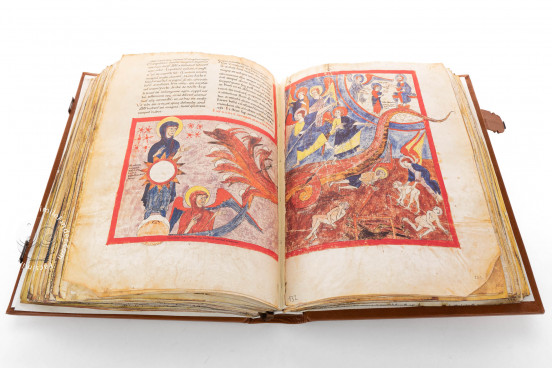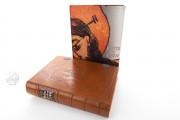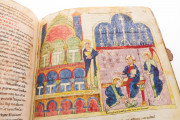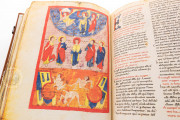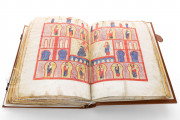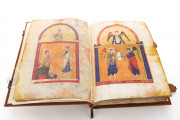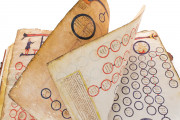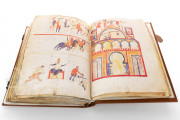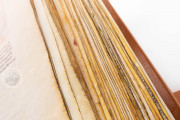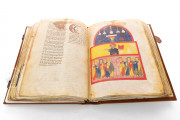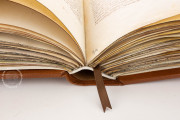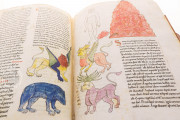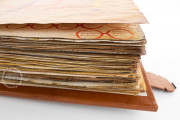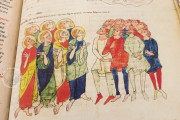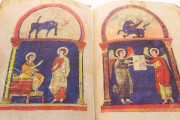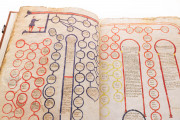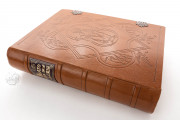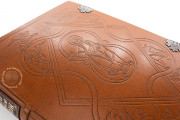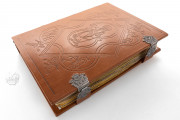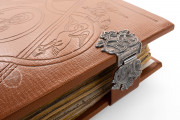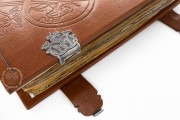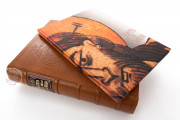The Turin Codex is an early twelfth-century manuscript of Beatus of Liébana’s commentary on the Christian biblical book of the Apocalypse. It is the only illustrated Beatus manuscript attributable to Catalonia. Its 106 miniatures seem to have been copied from those in an earlier copy of the commentary donated to the cathedral of Girona but in a bolder palette featuring saturated primary colors. Its full-page miniature of scenes from the life of Christ in four registers is an unusual inclusion in a Beatus manuscript (fol. 16r).
We have 1 facsimile edition of the manuscript "Beatus de Liébana - Turin Codex": Beato de Turín facsimile edition, published by Testimonio Compañía Editorial, 2000
Request Info / Price
